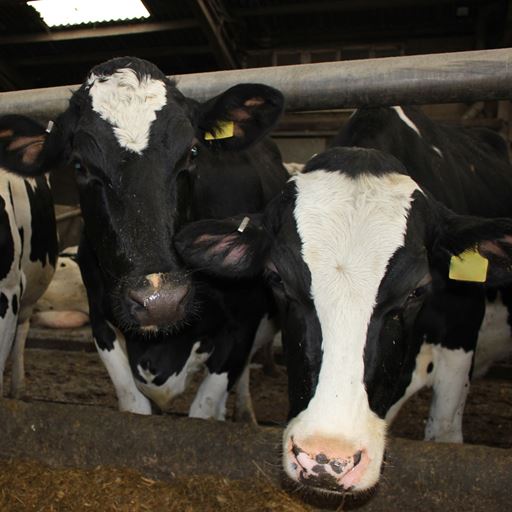Farmers could have early-warning system for lame cattle in future
-
Date
Thu 20 Dec 18

Farmers in the future could have a special early-detection system for lameness in cattle, thanks to a new technique developed by the University of Essex and Writtle University College.
Using location tracking data collected from wireless sensors on the cattle, the researchers have found big differences in how healthy and lame cows move around in their barn.
Importantly, the researchers were able to show how movement and use of space could be used to accurately predict the lameness status of individual cows within the herd.
The research was undertaken as part of the Cow Tracking Project, a joint collaboration between University of Essex, Writtle University College, Royal Veterinary College and University of Exeter.
“Lameness is a key health and welfare issue affecting commercial herds of dairy cattle, with potentially significant economic impacts due to the expense of treatment and lost milk production,” explained the study’s lead researcher Professor Edward Codling, from the School of Mathematics, Statistics and Actuarial Science at the University of Essex. “In our study we have developed a method which could potentially be an exciting system farmers could use to monitor the health of their herds in the future.”
Explaining the potential benefits of the research to farmers, Dr Jonathan Amory, from Writtle University College, said: “In the UK alone, the estimated cost of lameness to the dairy industry of treatment, lost milk yield, and lost fertility is over £128 million per year. Early detection of lameness can reduce the severity and duration of animal pain, and also minimise potential costs to farmers.”
Existing methods of detecting lame cattle can be time-consuming and the increase in intensive farming practices means farmers have a harder time detecting lameness in larger dairy herds. There is a growing need, therefore, for an automated behavioural monitoring system which can quickly and accurately detect lameness and other diseases at an early stage.
The study, published today in journal PLOS ONE, found that despite healthy and lame cows moving the same distance within the space available in the barn, it was how often they revisited specific areas and where they moved in the barn which was different. Whereas healthy cows explored a wider area of the barn and spent more time in the feeding area, the lame cows spent less time in the feeding area and more time in the areas of the barn that contained cubicles for resting.
Further subtle differences in barn location were also found to be linked to parity (the number of calves each cow had previously had) and the number of days each cow had been in milk.
The study monitored ten lame and ten non-lame cows within a herd of 210 Holstein pedigree cows on a commercial dairy in Essex. Location data was collected continuously, 24 hours per day, over five days using wireless sensors on the cows’ collars and a real time location system which processed and analysed the data to give a suite of space-use behavioural measures.
Although recent advances in sensor tracking technology have made it possible to observe the movement of a range of animals, before this study, little was known about how observed movement behaviour and space-use patterns in individual dairy cattle related to lameness.
During the study nearly 900,000 locations were recorded in total for the 20 monitored cows, giving a comprehensive pattern of movement for each individual cow.
Professor Codling added: “Using a simple predictive model based on only two measures of space use - the proportion of time spent in the feeding area and the full range of area they used in the barn - we were able to accurately determine the lameness status of all individual cows within the study.”
Although the model would need to be adapted and tested before being used in other farm environments, it demonstrates the principle of how only a few simple space-use measures could be used to accurately determine lameness for individual cows, potentially saving farmers time and money and improving cow welfare. Similar approaches could also potentially be used with other managed animals.
The researchers are now testing their findings using data collected over a much longer six-month period and from different farms.
.jpg?mh=500&mw=500&hash=6568B6C9CCF5290A596BEF6678B6AD0E)



